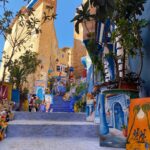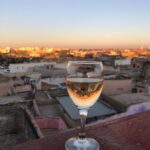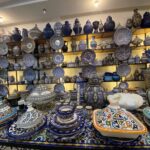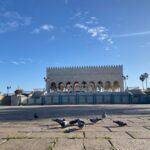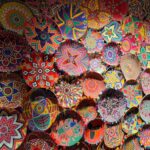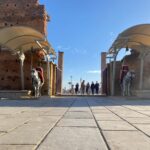Samlpe Itineraries
- Honeymoon in Morocco
- Tour Morocco on Your Way
- Jewish Heritage Tours – 9 Days Tour To Discover the Jewish Heritage
- 8 Days Tour Kingdom of Morocco
- AROUND MOROCCO TRIP In 9 Days
- Authentic Southern Morocco Itinerary
- Highlight Of Morocco Itinerary In 14 Days
- Imperial Cities Trip In 9 Days tour – 9 Days Tour To Discover the Jewish Heritage
- Sahara Highlight Trip From Marrakech
- Customized Tours Of Morocco
Learn more about Morocco
Why visit Morocco?
Located in northern Africa and a stone’s throw away from Europe, Morocco is an incredible country with plenty to appeal to every kind of traveler. Experience a warm and hospitable culture rich in tradition but modern in sensibility. Wander through bustling souks, mountains of spices scenting the air. Explore ancient ruins that have stood for millennia. Enjoy the tranquility of the desert or the picturesque blues and greens of the ocean. Shot your cares away in a Hammam. Welcome to Morocco!
Beautiful PANORAMIC LANDSCAPES
Morocco’s unique geography on the westernmost tip of northern Africa allows for a wide range of climates and landscapes for visitors who are seeking variety in their experiences.
Morocco borders both the Mediterranean Sea and the Atlantic Ocean, and benefits from their moderate climes and cool waters. The tree-covered inclines of the Atlas Mountain range cuts across the middle of the country, its peaks often covered in snow during colder months. On the opposite end of the spectrum, the Sahara along south and southeastern Morocco offers dry desert temperatures and seemingly endless stretches of sandy dunes.
MULTICULTURAL TAPESTRY COMBINING THE OLD AND THE NEW
With a history stretching back several millennia, Moroccan culture is a blend of all those that have occupied its past. The Berbers, Romans, Jews and Arabs, Spanish Moors, Portuguese, and French have all left their mark on Morocco, whether in its languages, cuisine, or its architecture.
Morocco is famous for the labyrinthine streets of its Medinas, found in the oldest parts of cities like Casablanca, Marrakech and Fez. Stepping into these narrow and store-lined alleyways feels like a heady, hectic world separate from the modern city beyond its walls. Yet outside of these pockets of history, many of these same cities are as cosmopolitan as any you will find in the U.S. or Europe.
Each city in Morocco possesses a distinct personality for visitors to discover, and experiences can be tailored to suit one’s preferences. Travelers can choose to stay in a traditional guesthouse in the Medina, called a Riad, or in a hotel or resort complete with all the modern amenities.
A WEALTH OF ART AND ARCHITECTURE
Morocco is known for producing beautiful handicrafts, and nowhere are these skills better exhibited than in Morocco’s souks, where visitors can shop for textiles, rugs, leather goods, furniture and jewelry, among other things. Carpet weaving is an especially successful local industry, and Moroccan rugs are globally renowned for their quality of workmanship.
Music is a large part of the Moroccan culture, as is dance, and will vary greatly by region. Traditional music styles were shaped by the diverse peoples and tribes that make up the Moroccan people. One example is the Reggada, which comes from the Rif war dance in which the Rif warriors danced in victory over the enemy, hence the use of a wooden gun and the foot strikes on the ground in rhythm to the music, symbolizing that the land belongs to the Rif. There is also the Gnawa music that has roots in sub-Saharan Africa and can be used in both spiritual and celebratory ways.
Moroccan architecture reflects both its traditional and colonial history. The country’s Islamic roots can be seen in the elegant geometric designs and ornamental interiors of mosques, Hammams, and homes. Moorish Spain also exerted its influence, particularly in the northern part of the country, blending architectural features like arches and domes with prevailing Islamic designs. Later, the French occupation in Morocco in the early 20th century led to the introduction of building regulations that affected the architecture of the time.
DELECTABLE DISHES TO WHET THE APPETITE
Moroccan cuisine is a wonderfully blend of Mediterranean, Berber, Arabic, African, and even Jewish cultural influences. It is fragrant, fresh, deliciously spiced, and nearly always accompanied by a glass of Moroccan mint tea and followed with fresh fruit.
Breakfast is traditionally a variety of breads, from layered Msemmen to traditional baguettes, served with cream cheese, honey, olive or Argan oil, and hard boiled eggs and yogurt completing the meal.
Lunch and dinner are generally a traditional Tagine or couscous, or perhaps barbecued skewers of lamb, beef, or chicken. There are also a multitude of cooked and raw salads that will precede the main course, and Moroccans usually eat with their hands, using bread to scoop up the food.
There are also many sweets served all throughout the day, from the honey drenched cookies, to dates, to French pastries. Almonds are also used in abundance, as are peanuts, so those with food allergies should be sure to mention any restrictions to their hosts and servers.
A WARM AND WELCOMING CULTURE
The Moroccan culture puts a heavy emphasis on hospitality. Moroccans are warm and welcoming, always eager to share the beauty of their country and culture with outsiders. Most locals are happy to help out anyone in need, and may even befriend travelers and invite them to enjoy a cup of tea. Tea is often offered in shops, or even market stalls, to customers. If a Moroccan really wants to welcome you, they will also you cookies with your tea, or perhaps even dates and milk as the highest form of welcome. While there is little physical contact between men and women in public, people of the same gender will often greet one another with an embrace and a kiss or five on the cheek. Romantic public displays of affection should be avoided in deference to more conservative social mores than Westerners may be used to.



